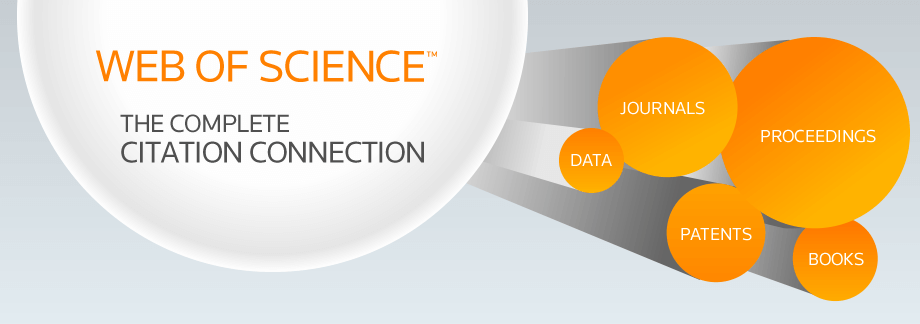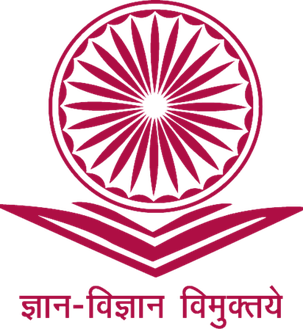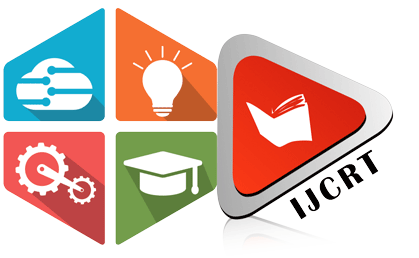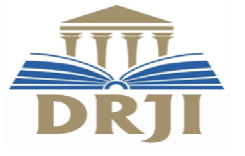INTERNATIONAL JOURNAL OF CREATIVE RESEARCH THOUGHTS - IJCRT (IJCRT.ORG)
International Peer Reviewed & Refereed Journals, Open Access Journal
IJCRT Peer-Reviewed (Refereed) Journal as Per New UGC Rules.
ISSN Approved Journal No: 2320-2882 | Impact factor: 7.97 | ESTD Year: 2013
Call For Paper - Volume 13 | Issue 11 | Month- November 2025
Scholarly open access journals, Peer-reviewed, and Refereed Journals, Impact factor 7.97 (Calculate by google scholar and Semantic Scholar | AI-Powered Research Tool) , Multidisciplinary, Monthly, Indexing in all major database & Metadata, Citation Generator, Digital Object Identifier(CrossRef DOI)
Contact Us Click Here
WhatsApp Contact Click Here
Volume 6 | Issue 1
| IJCRT Journal front page | IJCRT Journal Back Page |
Paper Title: STATCOM BASED DEVELOPMENT OF POWER QUALITY OF GRID CONNECTED WIND ENERGY SYSTEM
Publisher Journal Name: IJCRT
Your Paper Publication Details:
Published Paper ID: - IJCRTNCES024
Register Paper ID - 180430
Title: STATCOM BASED DEVELOPMENT OF POWER QUALITY OF GRID CONNECTED WIND ENERGY SYSTEM
Author Name(s): K.Haritha, G.Prasanna, S.Suresh
Publisher Journal name: IJCRT
Volume: 6
Issue: 1
Pages: 163-170
Year: December - 2017
Downloads: 2377
Abstract
The renewable energy resources like wind, solar, hydro, biomass etc. are required for sustainable growth and social progress, it is essential to meet the energy need by utilizing the renewable energy resources. The necessity of integrated renewable energy like wind energy into the power system is to make it possible to minimize the environmental impacts. This project proposes the STATCOM control scheme for grid connected wind energy system for power quality enhancement. A bang-bang controller which is based on hysteresis current control scheme is developed for STATCOM. STATCOM is connected at a point of common coupling (PCC) to mitigate the power quality problems. The STATCOM control scheme applied for the grid connected wind energy generation system (WEGS) used for enhancement of power quality is simulated using MATLAB/SIMULINK in power system block set. This proposed scheme assures the enhancement of power quality in a generated output.
Licence: creative commons attribution 4.0
License
Keywords
FACTS devices, Power quality issues, STATCOM, Wind turbine, Point of Common Coupling
License
Paper Title: ENHANCEMENT OF POWER QUALITY IN DISTRIBUTION SYSTEM BY USING FACTS THROUGH SMES
Publisher Journal Name: IJCRT
Your Paper Publication Details:
Published Paper ID: - IJCRTNCES023
Register Paper ID - 180429
Title: ENHANCEMENT OF POWER QUALITY IN DISTRIBUTION SYSTEM BY USING FACTS THROUGH SMES
Author Name(s): K.Swapna
Publisher Journal name: IJCRT
Volume: 6
Issue: 1
Pages: 154-162
Year: December - 2017
Downloads: 2321
Abstract
The main aim of project is to improve the power quality in distribution system by using facts device with SMES unit. In existing system SMES unit is proposed to improve the dynamic performance of a wind energy conversion system equipped with DFIG during voltage sag and voltage swell events. The converter and the chopper of the SMES unit are controlled using a hysteresis current controller and a fuzzy logic controller, respectively. In proposed system a 12-pulse based Static Synchronous Series Compensator (SSSC) with and without Superconducting Magnetic Energy Storage (SMES) for enhancing the voltage stability. The Control scheme for the chopper circuit of SMES coil is designed. A three area system is taken as test system and the operation of SSSC with and without SMES is analyzed for various transient disturbances in MATLAB / SIMULINK environment.
Licence: creative commons attribution 4.0
License
Paper Title: DETERMINATION OF PARAMETERS OF A GIVEN SPV MODULE USING SOLAR PVTR
Publisher Journal Name: IJCRT
Your Paper Publication Details:
Published Paper ID: - IJCRTNCES022
Register Paper ID - 180428
Title: DETERMINATION OF PARAMETERS OF A GIVEN SPV MODULE USING SOLAR PVTR
Author Name(s): B.Prem Charan, Dr.G.Suresh Babu, Priyanka shukla
Publisher Journal name: IJCRT
Volume: 6
Issue: 1
Pages: 148-153
Year: December - 2017
Downloads: 2299
Abstract
Indeed, it is undoubtedly accepted that the presence of SPV (solar photovoltaic) module is ubiquitous. The power voltage characteristic of photovoltaic (PV) module operating under partial shading conditions, under different tilt angles the output power obtained will be varied. In this paper a new method of obtaining maximum power by using bypass diode is implemented on a PVTR (photo voltaic trainer research system), such that uninterrupted output power can be achieved. The experimental results verify that the output power is varied with the varying of panel cells that are under shading area and with the change in the angle. Compared to many ways of studying the performance of a SPV module at different places, It is very convenient to study the effects that impact the electrical parameters which can be observed on a single equipment at one place named as standalone PVTR system
Licence: creative commons attribution 4.0
License
Keywords
PVTR system, PV module, Bypass diode, partial shading, Pyranometer
License
Paper Title: DESIGN & SIMULATION OF 3-PHASE, 19-LEVEL INVERTER FEW NUMBER OF COMPONENTS FOR INDUSTRIAL APPLICATIONS
Publisher Journal Name: IJCRT
Your Paper Publication Details:
Published Paper ID: - IJCRTNCES021
Register Paper ID - 180427
Title: DESIGN & SIMULATION OF 3-PHASE, 19-LEVEL INVERTER FEW NUMBER OF COMPONENTS FOR INDUSTRIAL APPLICATIONS
Author Name(s): Ravi Naragani
Publisher Journal name: IJCRT
Volume: 6
Issue: 1
Pages: 142-147
Year: December - 2017
Downloads: 2464
Abstract
This paper deals with study of three phases Nineteen Level inverter fed induction motor drive. The nineteen levels are realized by cascading Two H- Bridges. The poor quality of voltage and current of a conventional inverter fed induction machine is due to the presence of harmonics and hence there is significant level of energy losses. The Multilevel inverter is used to reduce the harmonics. The inverters with a large number of steps can generate high quality voltage waveforms. The higher levels can follow a voltage reference with accuracy and with the advantage that the generated voltage can be modulated in amplitude instead of pulse-width modulation. The CHB topology consists of several H- bridges and dc sources. This topology is implemented to three-phase system. In the symmetric structure, the values of the dc voltage sources are same. However, in asymmetric topology the magnitudes of the dc voltage sources are unequal. Asymmetric CHB topology generates a large number of levels for the same number of components in comparison with symmetric topology for the same number of power electronic components. For asymmetric inverters, a new structure has been recommended in, which reduces the number of switches and dc voltage sources compared with the CHB inverter. However, for creating a large number of output. Multilevel inverters with more number of levels can produce high quality voltage waveforms. In this concept three-phase is used instead of single-phase and implemented for nineteen levels, which can generate a large number of levels with reduced number of IGBTs, gate driver circuits and diodes. A comparison is presented between proposed multilevel inverter and conventional cascade topology.
Licence: creative commons attribution 4.0
License
Keywords
Induction motor, Matlab/simulink, Multilevel inverters, voltage source invert and, Total Harmonic distortion
License
Paper Title: CONTROL OF A BIDIRECTIONAL DC-DC CONVERTER TO INTERFACE ULTRACAPACITOR WITH RENEWABLE ENERGY SOURCES
Publisher Journal Name: IJCRT
Your Paper Publication Details:
Published Paper ID: - IJCRTNCES020
Register Paper ID - 180426
Title: CONTROL OF A BIDIRECTIONAL DC-DC CONVERTER TO INTERFACE ULTRACAPACITOR WITH RENEWABLE ENERGY SOURCES
Author Name(s): K.Avinash, Priyanka Shukla, B. Prem Charan
Publisher Journal name: IJCRT
Volume: 6
Issue: 1
Pages: 136-141
Year: December - 2017
Downloads: 2262
Abstract
The continual rise in electricity demand, combined with serious environmental problems created by traditional energy systems have been driving societies towards the use of renewable energy sources. However, the natural variability of some renewable sources due to their strong dependence on the weather conditions result to a high fluctuated output power, which impacts on the local loads that are sensitive to pulsating power. Hence, there is a need to support these sources by use of energy storage device, where it either injects its stored energy or absorbs the excess energy during the transients in the renewable source; resulting in a smooth output power to the load. In this paper, the control of a bidirectional converter to interface an ultra capacitor as storage device to renewable energy systems is discussed. The controller of the converter system has been designed and simulated based on the integration of both Current Mode Control (CMC) and Linear Quadratic Regulator (LQR) methods. The controller performance is tested under different modes of operating conditions in bidirectional converter using MATLAB/Simulink simulation.
Licence: creative commons attribution 4.0
License
Keywords
DC-DC converter, ultra capacitor, buck mode converter, boost mode converter, current mode control (CMC), linear quadratic regulator (LQR) control
License
Paper Title: Small–Signal Stability Analysis of Grid Connected Type–A, Type–C and Type–D Wind Power Plants
Publisher Journal Name: IJCRT
Your Paper Publication Details:
Published Paper ID: - IJCRTNCES019
Register Paper ID - 180425
Title: SMALL–SIGNAL STABILITY ANALYSIS OF GRID CONNECTED TYPE–A, TYPE–C AND TYPE–D WIND POWER PLANTS
Author Name(s): Priyanka Khirwadkar Shukla, B. Premcharan, K. Avinash
Publisher Journal name: IJCRT
Volume: 6
Issue: 1
Pages: 130-135
Year: December - 2017
Downloads: 2299
Abstract
Small–Signal Stability Analysis of Grid Connected Type–A, Type–C and Type–D Wind Power Plants
Licence: creative commons attribution 4.0
License
Keywords
Power System Analysis Toolbox (PSAT), Small-Signal Stability, Type-A WPP, Type-C WPP, Type-D WPP, Wind Penetration Level and Wind Power Plant (WPP)
License
Paper Title: Bidirectional AC–DC Converter for A DC Distribution System
Publisher Journal Name: IJCRT
Your Paper Publication Details:
Published Paper ID: - IJCRTNCES018
Register Paper ID - 180423
Title: BIDIRECTIONAL AC–DC CONVERTER FOR A DC DISTRIBUTION SYSTEM
Author Name(s): Yerra Prashanthi, Kodi Suman
Publisher Journal name: IJCRT
Volume: 6
Issue: 1
Pages: 119-129
Year: December - 2017
Downloads: 2895
Abstract
A bidirectional ac–dc con- verter is proposed for a 380-V dc power distribution system to control bidirectional power flows and to improve its power con- version efficiency. To reduce the switches’ losses of the proposed non isolated full-bridge ac–dc rectifier using a unipolar switching method, switching devices employ insulated-gate bipolar transistors, MOSFETs, and silicon carbide diodes. Using the analysis of the rectifier’s operating modes; each switching device can be selected by considering switch stresses. A simple and intuitive frequency detection method for a single-phase synchronous reference frame-phase-locked loop (SRF-PLL) is also proposed using a filter compensator, a fast period detector, and a finite impulse response filter to improve the robustness and accuracy of PLL performance under fundamental frequency variations. In addition, design and control methodology of the bidirectional full-bridge CLLC resonant converter is suggested for the galvanic isolation of the dc distribu-tion system. A dead-band control algorithm for the bidirectional dc–dc converter is developed to smoothly change power conversion directions only using output voltage information. Experimental results will verify the performance of the proposed methods using a 5-kW prototype converter.
Licence: creative commons attribution 4.0
License
Keywords
AC–DC boost rectifier, bidirectional isolated con- verter, CLLC resonant converter dc distribution system.
License
Paper Title: POWER REGULATION OF PMSG FED GRID CONNECTED MATRIX CONVERTER
Publisher Journal Name: IJCRT
Your Paper Publication Details:
Published Paper ID: - IJCRTNCES017
Register Paper ID - 180420
Title: POWER REGULATION OF PMSG FED GRID CONNECTED MATRIX CONVERTER
Author Name(s): Akula Srikanth, M. Mahesh kumar
Publisher Journal name: IJCRT
Volume: 6
Issue: 1
Pages: 110-118
Year: December - 2017
Downloads: 2347
Abstract
This paper presents the Modelling and simulation of variable speed wind turbine driven permanent magnet synchronous generator (PMSG) connected to grid through matrix converter (MC). MC is used to convert three phase ac variable frequency variable rotor voltages into constant frequency ac voltage. Modelling of PMSG is done using its dynamic equations and then MC is integrated for the direct conversion to constant frequency, variable voltage output. A normal voltage oriented vector control approach with proportional and integral (PI) is employed to track the maximum power from wind and regulate the active and reactive power injected into the power grid. Simulation results obtained using MATLAB /Simulink prove the performance of the proposed system for different generator output powers.
Licence: creative commons attribution 4.0
License
Keywords
wind turbine; permanent magnet synchronous generator; Matrix Converter; Mathematical model
License
Paper Title: POWER FLOW MANAGEMENT OF A GRID-CONNECTED HYBRID PV WIND BATTERY BASED SYSTEM WITH AN EFFICIENT MULTI INPUT TRANSFORMER COUPLED BIDIRECTIONAL DC-DC CONVERTER
Publisher Journal Name: IJCRT
Your Paper Publication Details:
Published Paper ID: - IJCRTNCES016
Register Paper ID - 180419
Title: POWER FLOW MANAGEMENT OF A GRID-CONNECTED HYBRID PV WIND BATTERY BASED SYSTEM WITH AN EFFICIENT MULTI INPUT TRANSFORMER COUPLED BIDIRECTIONAL DC-DC CONVERTER
Author Name(s): Vasanki Shailaja
Publisher Journal name: IJCRT
Volume: 6
Issue: 1
Pages: 105-109
Year: December - 2017
Downloads: 2273
Abstract
The main aim of this project is a control strategy for power flow management of a grid-connected hybrid PV-wind-battery based system with an efficient multi-input transformer coupled bidirectional-dc converter is presented. The proposed system aims to satisfy the load demand, manage the power flow from different sources, inject surplus power into the grid and charge the battery from grid as and when required. A transformer coupled boost half-bridge converter is used to harness power from wind, while bidirectional buck-boost converter is used to harness power from PV along with battery charging/discharging control. A single-phase full-bridge bidirectional converter is used for feeding ac loads and interaction with grid. The proposed converter architecture has reduced number of power conversion stages with less component count, and reduced losses compared to existing grid-connected hybrid systems. This improves the efficiency and reliability of the system.
Licence: creative commons attribution 4.0
License
Keywords
PV, DC-DC Converter, Battery, Wind, Hybrid system, MPPT
License
Paper Title: IMPLEMENTATION OF INDUCTION MOTOR UTILIZING BUCK BOOST CONTROLLED SLIP POWER RECOVERY SCHEME WITH CHOPPER
Publisher Journal Name: IJCRT
Your Paper Publication Details:
Published Paper ID: - IJCRTNCES015
Register Paper ID - 180418
Title: IMPLEMENTATION OF INDUCTION MOTOR UTILIZING BUCK BOOST CONTROLLED SLIP POWER RECOVERY SCHEME WITH CHOPPER
Author Name(s): G. Anjaneyulu
Publisher Journal name: IJCRT
Volume: 6
Issue: 1
Pages: 98-104
Year: December - 2017
Downloads: 2248
Abstract
In the present scenario, Induction motors are the most consistently used motors in present day development control structures. Induction motors are the most usually utilized motors in mechanical movement control frameworks. Prior, the nature of modern uses of the induction motors were of constant speed mechanical drives because of troublesome speed control frameworks however the current headway in power electronics segments have prepare for the improvement of power electronics based variable speed induction motor drives supplanting dc drives. The slip power recovery scheme including Static Scherbius Drive gives speed control of slip ring induction motor beneath synchronous speed. The slip power recovery drives is utilized as a part of vast limit pumps and fan drives, variable speed wind vitality frameworks, shipboards VSCF (variable-speed/constant frequency) frameworks, variable-speed hydro pumps/generators, utility framework flywheel vitality stockpiling frameworks and so forth. In this paper different power quality issues made by utilization of power electronics segments in this scheme and their cures have been talked about. This study paper will give the understanding of patterns and advances utilized as a part of slip power recovery scheme. And the Slip control recovery plot including Static Scherbius Drive gives speed control of slip ring induction motor underneath synchronous speed. Slip Power Recovery Framework (SPRS) innovation is ending up progressively critical to accomplish productive use of vitality with regards to vitality preservation and condition assurance. Slip ring induction motors are utilized as a part of different industry portions like Cement, Metals and water and Waste water treatment, and so on. Customarily, speed control of slip ring induction motor was accomplished through fluctuating the rotor protection. Persistent power streaming to the rotor resistor is an impressive warmth misfortune. SPRS is an outside framework associated with the rotor circuit giving amazing torque and speed control and furthermore recoups power from the rotor and sustains back to the power framework, staying away from wastage of vitality. This framework is appropriate for any new establishment and retrofits. SPRS offers the most ideal answer for customizable speed applications with constrained speed go. The Inverter is associated with rotor winding and the converter is associated with the power framework. The transformer is utilized to coordinate the framework voltages. The inverter control regulates the measure of power nourished once again into the power framework, permitting control of motor speed. The consequences of simulation are considered, broke down and looked at. It has been seen from the simulation comes about that the power factor and productivity of the slip power recovery scheme utilizing inverter with chopper has preferred esteems over the slip power recovery scheme.
Licence: creative commons attribution 4.0
License
Keywords
Slip power recovery system, Inverter and Induction motors
License
Paper Title: IDEAL PLAN OF DC FAST-CHARGING STATIONS FOR EVS IN LOW VOLTAGE GRIDS
Publisher Journal Name: IJCRT
Your Paper Publication Details:
Published Paper ID: - IJCRTNCES014
Register Paper ID - 180417
Title: IDEAL PLAN OF DC FAST-CHARGING STATIONS FOR EVS IN LOW VOLTAGE GRIDS
Author Name(s): CH. Ramaiah
Publisher Journal name: IJCRT
Volume: 6
Issue: 1
Pages: 91-97
Year: December - 2017
Downloads: 2306
Abstract
The expanding infiltration of Electric Vehicles (EVs) and their charging systems is speaking to new high-power utilization loads for the distribution system operators (DSOs). To take care of the issue of the EV extend regarding driving kilo meters, the auto makers have contributed assets on new EV models by expanding the span of the batteries. To fulfill EV load request of the new EV models in urban regions general society DC Fast-Charging Station (DCFCS) is imperative to revive EVs quickly. The presentation of the Battery Vitality Stockpiling inside the DCFCSs is considered in this paper an option answer for diminish the operational costs of the charging stations and in addition the capacity to relieve negative effects amid the blockage on the power grids. An exact depiction of the DCFCS and its outline system, which can decouple the pinnacle load request, caused by EVs on the fundamental grid and reduction the association expenses. At last, a monetary assessment is done to assess the plausibility and the cost-benefit analysis (CBA) of the DCFCSs. The proposed approach considers different specialized and monetary issues, for example, cost of establishment, association expenses and life cycle cost of the batteries. In any case, expanding fame of electric vehicles will represent an awesome danger to existing electric grids due to included load of electric vehicles in power systems distribution arrange. This investigation gives answer for balance out electric grid wellbeing as two goals. Initially, to build up a fast charging station to lessen purchaser nervousness issues identified with moderate charging stations. The charging setup planned in this examination cooks two issues; one, to charge EV batteries in least time and two, furnish utilities with dynamic and receptive power bolster utilizing EV batteries and charging station, separately. The second target of this investigation is to create brilliant charging methodology for the benefit of electric utilities and EV proprietors. The approach embraced in this examination to create shrewd charging plan depends on enhancement strategy to limit cost of charging for both, electric utilities and EV proprietors. This will basically level utility load for the duration of the day by giving power to charge EV batteries amid off-crest hours, and, then again, utilities will take power from EV batteries for top power shaving amid top power request hours of the day. The proposed cost-benefit analysis can be utilized to confirm the viability and appropriateness of DCFCS in huge scale. The enhancement technique embraced in this investigation is especially quadratic programming to limit cost of charging.
Licence: creative commons attribution 4.0
License
Paper Title: OPTIMAL DAY-HEAD POWER ATTAINMENT WITH NON-CONVENTIONAL ENERGY SOURCE AND DEMAND RESPONSE
Publisher Journal Name: IJCRT
Your Paper Publication Details:
Published Paper ID: - IJCRTNCES013
Register Paper ID - 180416
Title: OPTIMAL DAY-HEAD POWER ATTAINMENT WITH NON-CONVENTIONAL ENERGY SOURCE AND DEMAND RESPONSE
Author Name(s): G.Sireesha, M.Mahesh Kumar
Publisher Journal name: IJCRT
Volume: 6
Issue: 1
Pages: 81-90
Year: December - 2017
Downloads: 2308
Abstract
Licence: creative commons attribution 4.0
License
Keywords
Demand Response, Non Conventional Energy Sources, Energy Storage, Day-Head, Two Stage Stochastic Problem and Blender Decomposition
License
Paper Title: ANALYSIS OF MODULATION TECHNIQUES FOR MATRIX CONVERTERS APPLIED TO PMSG BASED WIND ENERGY CONVERSION SYSTEMS
Publisher Journal Name: IJCRT
Your Paper Publication Details:
Published Paper ID: - IJCRTNCES012
Register Paper ID - 180415
Title: ANALYSIS OF MODULATION TECHNIQUES FOR MATRIX CONVERTERS APPLIED TO PMSG BASED WIND ENERGY CONVERSION SYSTEMS
Author Name(s): M. Mahesh Kumar
Publisher Journal name: IJCRT
Volume: 6
Issue: 1
Pages: 75-80
Year: December - 2017
Downloads: 2303
Abstract
This paper presents a review of the recent advances in matrix converter topologies used with the permanent magnet synchronous generator (PMSG) in wind power generation systems. Two-stage matrix converters known as sparse matrix converters are compared to the conventional matrix converter in terms of implementation complexity, cost, power rating and voltage ratio. Control strategies are combinations of two elementary blocs: the MPPT algorithms and the regulation approach. MPPT algorithms are crucial for the improvement of wind harvest and regulation approaches are generally based on adaptive, non-linear or linear automatic methods that are responsible for current control or field oriented control or reactive power control. On the other hand, several applied to the matrix converter-PMSG scheme are briefly presented.
Licence: creative commons attribution 4.0
License
Keywords
PMSG-based wind conversion system, matrix converter, sparse matrix converter, modulation techniques, control strategies
License
Paper Title: STUDY OF URBANIZATION IMPACT ON POTENTIAL GROUNDWATER RECHARGEABLE ZONES OF HYDERABAD CITY
Publisher Journal Name: IJCRT
Your Paper Publication Details:
Published Paper ID: - IJCRTNCES011
Register Paper ID - 180413
Title: STUDY OF URBANIZATION IMPACT ON POTENTIAL GROUNDWATER RECHARGEABLE ZONES OF HYDERABAD CITY
Author Name(s): P.Yaswitha, K. Ravikumar, T.VinayTeja, P. Swathi, K.Prem Kumarm, K.Swetha
Publisher Journal name: IJCRT
Volume: 6
Issue: 1
Pages: 66-74
Year: December - 2017
Downloads: 2244
Abstract
Licence: creative commons attribution 4.0
License
Keywords
Groundwater Recharge, Open Areas, ERDAS, RS Images, GHMC and Regression Analysis
License
Paper Title: IMPROVEMENT OF GROUND WATER TABLE BY USING PERVIOUS CONCRETE AS A RIGID PAVEMENT
Publisher Journal Name: IJCRT
Your Paper Publication Details:
Published Paper ID: - IJCRTNCES010
Register Paper ID - 180411
Title: IMPROVEMENT OF GROUND WATER TABLE BY USING PERVIOUS CONCRETE AS A RIGID PAVEMENT
Author Name(s): Thangamani K, Nandini.A
Publisher Journal name: IJCRT
Volume: 6
Issue: 1
Pages: 57-65
Year: December - 2017
Downloads: 2281
Abstract
Licence: creative commons attribution 4.0
License
Paper Title: GREEN BUILDING CONSTRUCTION
Publisher Journal Name: IJCRT
Your Paper Publication Details:
Published Paper ID: - IJCRTNCES009
Register Paper ID - 180410
Title: GREEN BUILDING CONSTRUCTION
Author Name(s): Raghavendra K, Amatul Baseer Shazia
Publisher Journal name: IJCRT
Volume: 6
Issue: 1
Pages: 54-56
Year: December - 2017
Downloads: 2223
Abstract
This thesis investigates the likelihood of including new socio-investment indicators. Clinched alongside green building rating frameworks in place with Push inventive polishes in the fabricating. Planning, design, development and operations Eventually Tom's perusing presenting a more extensive meaning of. Manageability in the fabricating industry. It gives A similar examination of the. Frameworks, indicators and estimation techniques from claiming authority on vitality Furthermore. Natural outline (LEED), which is a voluntary green fabricating rating system, Furthermore. The reporting weight rules of worldwide reporting weight activity (GRI) Toward looking at a few. Chosen socio-investment indicators from GRI and addressing those plausibility of. Presenting comparative indicators (credits) in LEED. Toward completing so, it assesses those. Extensiveness from claiming LEED against an alternate widely-accepted rundown for measurements formed. To practicality benchmarking. The hypothetical schema may be dependent upon an investigate from claiming. Contingencies intrinsic with Different definitions for manageability What's more an Investigation of the new. Governmental issues that is rising through the talk for supportability. The Scrutinize depends on the. Information gathered starting with USBGC LEED task Directory, documents submitted Throughout the. LEED affirmation transform for four activities that seek after LEED affirmation What's more. Meetings with the members from claiming these projects, USGBC parts Also kin who were. Actively included in the preparation What's more execution of the GRI rules. Eventually Tom's perusing. Portraying the joined association Around those fabricating industry, work markets. Budgetary What's more legitimate forces, those discoveries of this examination indicate that improvement for socio. Ii. Financial indicators for those fabricating business is not impossible, however is limited of the. Strategies from claiming possession quality calculations, regulations around work markets, workflow structure from claiming. Those fabricating business and the political structure behind those rating frameworks
Licence: creative commons attribution 4.0
License
Keywords
Building, Energy efficiency, Green Building, socio Investment
License
Paper Title: SEISMIC AND WIND-INDUCED VIBRATIONS ON HIGH MAST LIGHTING STRUCTURES
Publisher Journal Name: IJCRT
Your Paper Publication Details:
Published Paper ID: - IJCRTNCES008
Register Paper ID - 180409
Title: SEISMIC AND WIND-INDUCED VIBRATIONS ON HIGH MAST LIGHTING STRUCTURES
Author Name(s): Jeelan Pasha
Publisher Journal name: IJCRT
Volume: 6
Issue: 1
Pages: 44-53
Year: December - 2017
Downloads: 2264
Abstract
This study is conceived the seismic and wind analysis of multi-sided high mast lighting structures (HMLS) of Steel and Aluminum of 20m, 30m, 40m and 50m heights. And also Fatigue design load factors like Galloping, Vortex shedding and Natural wind gust is also considered for the analysis from AASHTO 2001 Specifications. These loads are arrived at by adopting suitable importance factors. To understand the failure of HMLS under seismic and wind induced vibrations due to wind loads and earth quake loads. The ultimate focus is on the tip deflection of HMLS of different heights. The model has been analyzed using STAAD.ProV8i by adopting the finite element method. Analysis is done on Steel and Aluminum high mast lighting structures. Dynamic analysis such as Modal analysis, Response spectrum analysis and Time history analysis on HMLS is done. Primarily the modal analysis is performed and then the structures have been analyzed for wind loads with gust and without gust factor. Wind loads have been calculated based on three codes of reference namely IS-875 (Part 3)-1987 CODE, IBC-2009 CODE and AASHTO-2001 CODE. Gust factor has been taken from IS: 802 (Part 1 / Sec 1): 1995.
Licence: creative commons attribution 4.0
License
Keywords
Wind Analysis, modal analysis, Response Spectrum Analysis, Time History Analysis, and Analysis on Fatigue Design Loads like Galloping, Vertex Shedding and Natural Wind Gust
License
Paper Title: RAINWATER HARVESTING TO IMPROVE GROUNDWATER LEVEL USING LU/LC CLASSIFICATION IN TELEPHONE COLONY, SAROORNAGAR, HYDERABAD
Publisher Journal Name: IJCRT
Your Paper Publication Details:
Published Paper ID: - IJCRTNCES007
Register Paper ID - 180408
Title: RAINWATER HARVESTING TO IMPROVE GROUNDWATER LEVEL USING LU/LC CLASSIFICATION IN TELEPHONE COLONY, SAROORNAGAR, HYDERABAD
Author Name(s): Shiwani, Ayyavari Supraja, Godala sandhya, Arala Manasa
Publisher Journal name: IJCRT
Volume: 6
Issue: 1
Pages: 37-43
Year: December - 2017
Downloads: 2264
Abstract
The management and distribution of water has been centralized. People are much dependent on government system, which has collapsed the tradition of water harvesting system and has resulted in disruption of community participation in water management. As the crisis of water continues to be increasing day by day, direct reformation is being required in water management system. In this present scenario scientific and technological studies must be carried out for assessing the present status for suggesting the suitable mitigation measures (1). The urban regions are being paved and built, resulting in reduction of groundwater recharge area. Consequently, large amount of good quality water that rains over the cities is withdrawn from recharge as it is directed into the municipal drainage system. Moreover, in extreme rain events the drainage systems may be over-flooded which may lead to ecologic and economic hazards. This work reviews the history of rain water harvesting and discusses the impact of rain water harvesting in modern-urban environments on the hydrological system. Two types of rain water harvesting methods are being discussed and compared with the help of Land Use and Land Cover classification (LU/LC). LU/LC of telephone colony has been done., that indicates the rain water harvesting may increase the direct infiltration and can contribute to the ground water recharge .Water management and rainwater harvesting are increasing their prominence with the alarming growth in population and urbanization as well as severity in droughts (2). Land use and land cover leads to mitigating climate change which includes a forestation and modification of city building and organization and changing agricultural management practices to increase carbon in soil and to accelerate removal of carbon from the atmosphere.
Licence: creative commons attribution 4.0
License
Keywords
Water harvesting system, hydrological system, urbanization, a forestation
License
Paper Title: STRENGTH DEVELOPMENT OF CONCRETE BY REPLACING CEMENT WITH GROUND GRANULATED BLAST FURNACE SLAG (GGBS)
Publisher Journal Name: IJCRT
Your Paper Publication Details:
Published Paper ID: - IJCRTNCES006
Register Paper ID - 180398
Title: STRENGTH DEVELOPMENT OF CONCRETE BY REPLACING CEMENT WITH GROUND GRANULATED BLAST FURNACE SLAG (GGBS)
Author Name(s): Amunuri Sravan Kumar, Pusukuri Indrateja, Gajam Nikhil, Ramachander Damera
Publisher Journal name: IJCRT
Volume: 6
Issue: 1
Pages: 32-36
Year: December - 2017
Downloads: 2384
Abstract
Industrial wastes like Ground Granulated Blast Furnace Slag (GGBS) show chemical properties similar to cement. Use of GGBS as cement replacement will simultaneously reduce cost of concrete and help to reduce rate of cement consumption. This paper on study report of strength analysis of GGBS concrete will give assurance to encourage people working in the construction industry for the beneficial use of it. This research work focuses on strength characteristics analysis of M30 grade concrete with replacement of cement by GGBS with 10%, 20%, and 30% and compare with plain cement concrete.
Licence: creative commons attribution 4.0
License
Paper Title: PERFORMANCE OF CONCRETE USING COCONUT SHELL
Publisher Journal Name: IJCRT
Your Paper Publication Details:
Published Paper ID: - IJCRTNCES005
Register Paper ID - 180397
Title: PERFORMANCE OF CONCRETE USING COCONUT SHELL
Author Name(s): Y.V. Mohan Reddy, P. Naveen Kumar, P. Surender, P. Srikanth Reddy
Publisher Journal name: IJCRT
Volume: 6
Issue: 1
Pages: 26-31
Year: December - 2017
Downloads: 2317
Abstract
this present experimental investigation an attempt is made to use low cost building material like a coconut shell. In the present thing the natural aggregate is replaced by 10%, 20%, 30% of coconut shell for different grades of concrete such as M20, M25. A comparative study is made on compressive strength between the conventional concrete and coconut shell concrete.
Licence: creative commons attribution 4.0
License
Keywords
cement concrete (CC), Coconut Shell (CS), Cement Mortar (CM), Consistency (P)
License
About IJCRT
The International Journal of Creative Research Thoughts (IJCRT) aims to explore advances in research pertaining to applied, theoretical and experimental Technological studies. The goal is to promote scientific information interchange between researchers, developers, engineers, students, and practitioners working in and around the world.
Indexing In Google Scholar, ResearcherID Thomson Reuters, Mendeley : reference manager, Academia.edu, arXiv.org, Research Gate, CiteSeerX, DocStoc, ISSUU, Scribd, and many more International Journal of Creative Research Thoughts (IJCRT) ISSN: 2320-2882 | Impact Factor: 7.97 | 7.97 impact factor and ISSN Approved. Provide DOI and Hard copy of Certificate. Low Open Access Processing Charges. 1500 INR for Indian author & 55$ for foreign International author. Call For Paper (Volume 13 | Issue 11 | Month- November 2025)
November 2025
Volume 13 | Issue 11
Last Date :
30-Nov-2025
Submit Manuscript Online Impact Factor: 7.97 Review Results : Within 02-03 Days Paper Publication : Within 02-03 Days

ISSN: 2320-2882 Impact Factor: 7.97 and ISSN APPROVED Journal Starting Year (ESTD) : 2013

ISSN: 2320-2882 Impact Factor: 7.97 and ISSN APPROVED Journal Starting Year (ESTD) : 2013

CONFERENCE PROPOSAL CONFERENCE PROCEEDINGS







































































